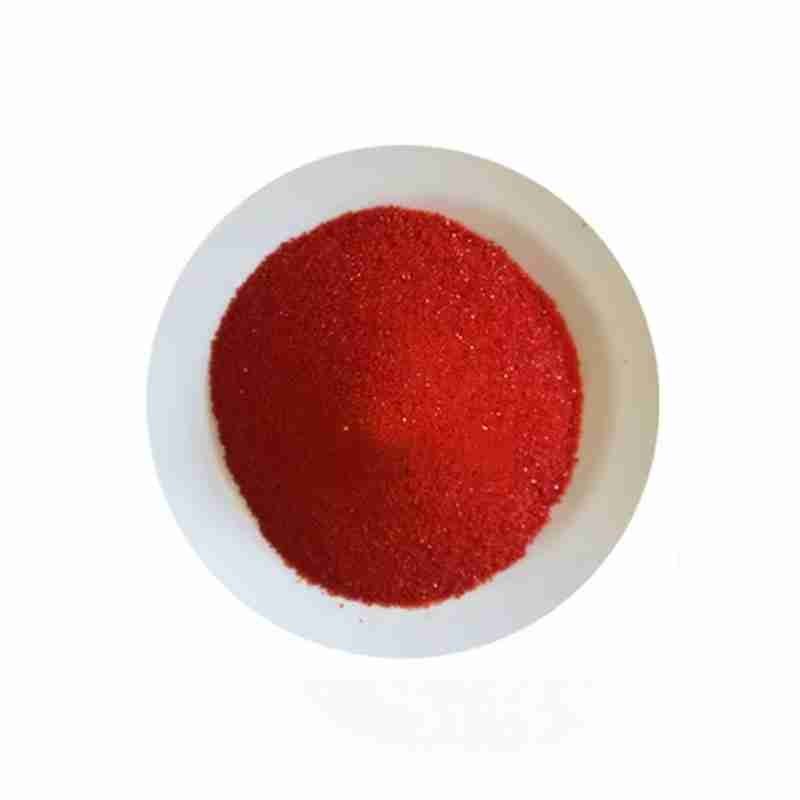Iron Oxide CAS #1317-61-9 Triiron Tetraoxide
Iron trioxide, chemical formula Fe3O4. Also known as iron oxide black, magnet, magnetite, or black iron, it is a black crystal with magnetism, hence it is also called magnetic iron oxide. It cannot be pronounced as ??ferrous metaferrite?? or ??ferrous metaferrite?? Fe (FeO2) 2, and is not a mixture of iron oxide and ferrous oxide, but can be approximated as a compound of ferrous oxide and ferrous oxide. This substance is soluble in acids, insoluble in water, alkali, and organic solvents such as ethanol and ether. Natural ferric oxide is insoluble in acids and can easily oxidize into ferric oxide in the air in humid conditions. Usually used as a pigment and polishing agent, it can also be used to manufacture audio tapes and telecommunications equipment.
发送询盘
Iron Oxide CAS #1317-61-9 Triiron Tetraoxide
| Triiron tetraoxide Basic information |
| Physical Properties?Occurrence and Uses?Preparation?Reactions |
| Product Name: | Triiron tetraoxide |
| Synonyms: | Iron(II,III) oxide, 98% (metals basis);Iron(II,III) oxide, 97% (metals basis);Iron(II,III) oxide, 99.95% (metals basis);Iron(II,III) oxide: (Ferrosoferric oxide
: Iron(III) oxide);Iron (II, III) oxide, 99.5% min (metals basis);Iron (II,III) oxide, 96% (metals basis) Synthetic black iron oxide;Iron(II,III) oxide, Puratronic, 99.997% (metals basis);Iron oxide, magnetic nanoparticles solution |
| CAS: | 1317-61-9 |
| MF: | Fe3O4-2 |
| MW: | 231.53 |
| EINECS: | 215-277-5 |
| Product Categories: | nano structured material;metal oxide;Inorganics |
| Mol File: | 1317-61-9.mol |
 |
|
| Triiron tetraoxide Chemical Properties |
| Melting point | 1538???C(lit.) |
| density | 4.8-5.1?g/mL?at 25???C(lit.) |
| refractive index | 3.0 |
| Fp | 7???C |
| storage temp. | -20??C |
| solubility | Aqueous Acid (Slightly) |
| form | powder |
| color | black |
| Specific Gravity | 5.2 |
| Odor | at 100.00?%. odorless |
| Water Solubility | Insoluble in water and organic solvents. Soluble in concentrated mineral acids. |
| Merck | 14,4040 |
| Stability: | Stable. Incompatible with strong acids, chloroformates, peroxides. |
| CAS DataBase Reference | 1317-61-9(CAS DataBase Reference) |
| NIST Chemistry Reference | Iron(ii,iii) oxide(1317-61-9) |
| EPA Substance Registry System | Iron oxide (Fe3O4) (1317-61-9) |
- 2
- 2-diallylpent-4-en-1-amine
- 4
- 95-16-9
- Ammonium sulfamate
- Benzothiazole
- cas:67889-00-3ح2
- cas:83524-75-8 | pigment black 32
- cas:928836-00-4 | 2
- cas:932745-70-5 | 4
- Chemical Minerals
- Coconut diethanolamide
- Daily Chemicals
- discount
- for sale
- General pvc resin
- hexyl D-glucoside
- in stock
- Lauramidopropyl betaine
- LAURIC ACID MONOETHANOLAMIDE
- Petroleum Additives
- Plasticiser
- Ploymers
- price
- PVC
- quotation
- Raw Materal
- Remove term: Petroleum Additives Petroleum Additive
- SODIUM ETHYL 2-SULFOLAURATE
Related Products
Chemical Name: o-Xylene
Synonyms: 1,2-Dimethylbenzene; ortho-xylene
CAS No.: 95-47-6
Molecular Formula: C8H10
Molecular Weight: 106.17
Chemical Name: Imazalil Sulfate
CAS No.: 58594-72-2
Molecular Formula: C14H14Cl2N2O.H2SO4
Molecular Weight: 395.26
Appearance: Solid
Aluminum chlorohydrate is an inorganic compound often used as a coagulant in water treatment processes. It is also known for its astringent properties and is utilized in various personal care products, such as antiperspirants and deodorants, due to its ability to temporarily close sweat glands. It enhances the viscosity and stability of formulations, making it a valuable ingredient in cosmetics and pharmaceuticals.
Chemical Name: STODDARD SOLVENT
CAS No.: 64742-88-7
Appearance: Colorless or Light Yellow Liquid
Calcium carbonate, with the chemical formula CaCO3, is an inorganic compound found in nature as calcite, aragonite, and vaterite. It is a white solid that is insoluble in water but soluble in acid. Widely used as a filler and coating pigment in paper and plastics, calcium carbonate also serves as a primary ingredient in the production of cement and lime. Known for its high purity and chemical stability, it is utilized in pharmaceuticals, food additives, and as a dietary calcium supplement. Its versatility makes it an essential component in various industrial applications.
Chemical Name: 3-Hydroxybutyric acid
CAS No.: 625-71-8
Molecular Formula: C4H8O3
Molecular Weight: 104.1
Appearance: White powder
Product name:HYDROXYPROPYL GUAR HYDROXYPROPYLTRIMONIUM CHLORIDE
Purity:99%
Appearance:Light Yellow Powder
Package:Customized according to customer needs.
Sample:Available
Chemical Name: Ammonium Iron(II) Sulfate
Synonyms: Diammonium iron bis(sulphate); iron (ii) ammonium sulfate
CAS No.: 10045-89-3
Molecular Formula: FeH5NO4S
Molecular Weight: 170.95
Bentonite, sodium-activated, is a type of clay rich in montmorillonite minerals, which undergoes a process to increase its sodium content. This alteration enhances its swelling and adsorptive properties, making it a highly effective thickener and gel-forming agent. Sodium bentonite is widely used in drilling muds, foundry sands, and as a binder in various industrial applications. Its ability to absorb liquids and form stable gels makes it invaluable in cosmetics, agriculture, and as a component in the manufacturing of ceramics and paper products.
Product name:Cyclopentane
Purity:96%
Appearance:White powder
Package:25kg/bag
Sample:Available
Ammonium sulfamate is a white crystalline compound with the chemical formula (NH4)2SO3. It is a versatile chemical used in various applications, including as a flame retardant, a fertilizer ingredient, and a chemical intermediate. In the agricultural sector, it serves as a source of nitrogen, promoting plant growth. As a flame retardant, it is effective in reducing the flammability of materials. Additionally, it is used in the synthesis of other chemicals due to its reactivity with amines and other organic compounds. Its properties make it a valuable component in a range of industrial processes.
Silicon dioxide, commonly known as silica, is a naturally occurring compound found in quartz and sand. It is a primary component of most rocks and is widely used in various industries due to its high thermal stability, chemical inertness, and optical clarity. In chemical applications, it is valued for its abrasive, refractory, and adsorptive properties, making it essential in products like glass, ceramics, and electronics.


















